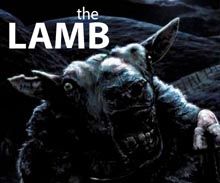 Metropolis is based on Osamu Tezuka's unfinished manga from 1949, itself inspired by Fritz Lang's 1927 silent film of the same name. The central theme of both manga and anime is the hubris of Man and his inevitable downfall, symbolised by the fall of the Tower of Babel, as it is in Lang's film.
Metropolis is based on Osamu Tezuka's unfinished manga from 1949, itself inspired by Fritz Lang's 1927 silent film of the same name. The central theme of both manga and anime is the hubris of Man and his inevitable downfall, symbolised by the fall of the Tower of Babel, as it is in Lang's film.There are also character analogues - Duke Red could be John Fredersen, Dr. Loughton echoes Rotwang, the mad professor, and Tima, created at the behest of Metropolis's ruler, the robot Maria. Beyond this though, any similarities in plot are superficial at best; Rintaro's Metropolis is about a militarized Ziggurat, Duke Red's own Babylonian tower, through which he plans to consolidate his power base. The Ziggurat is designed to be the ultimate weapon, realized by its integration with Tima - a robotic super-human; the tower's 'brain'. This is where the hand of screenwriter and Akira creator Katsuhiro Otomo really shows itself: Tima, only human in outward appearance, carries within her a potential for transformation that is far more destructive and all-encompassing than her creators could have imagined.
Despite being relatively multi-faceted, however, the story is hardly original, riffing on eveything from Tezuka's original Metropolis, Akira, Ghost in the Shell... through to Ghostbusters even (the old Gozerian paradigm). Behind this furious hotchpotch of narrative elements, the film is scored by a strangely ill-fitting Swing Jazz soundtrack (which morphs alarmingly at one point into what can only be described as Jazz Trance). But then there's the visuals - and what visuals they are. A combination of beautifully modelled CGI and hand-drawn cell animation, that reach an apex of immaculate, fluid detail in the destruction of Duke Red's tower; the symbolic liberation of Metropolis. It's a credit to Rintaro that he perceives digital animation as merely another tool in his armoury and does not, as other directors have done, abandon his artistic principles for technology fetishism.
One for the eyes this; send your brain on vacation.
メトロポリス
Dir. Rintaro, 2001

No comments:
Post a Comment